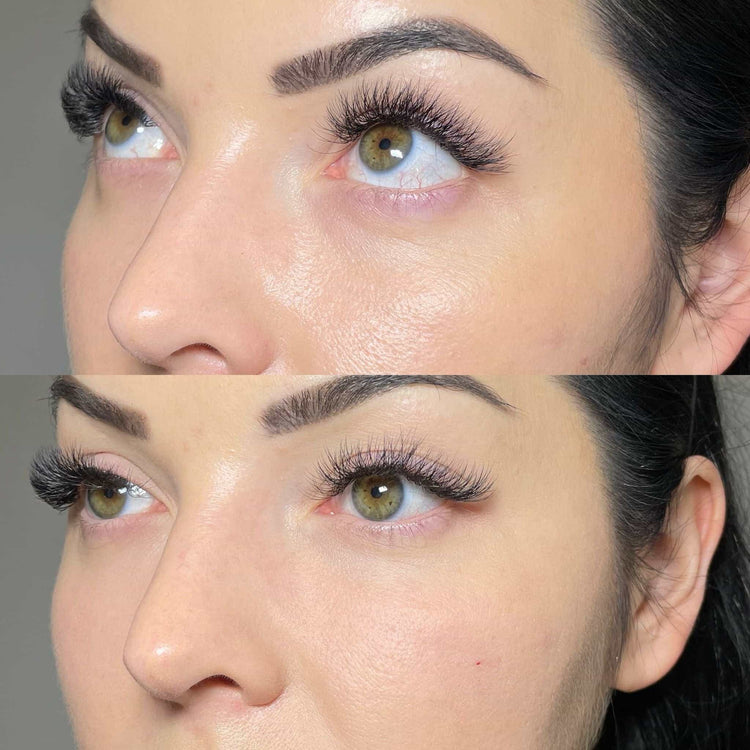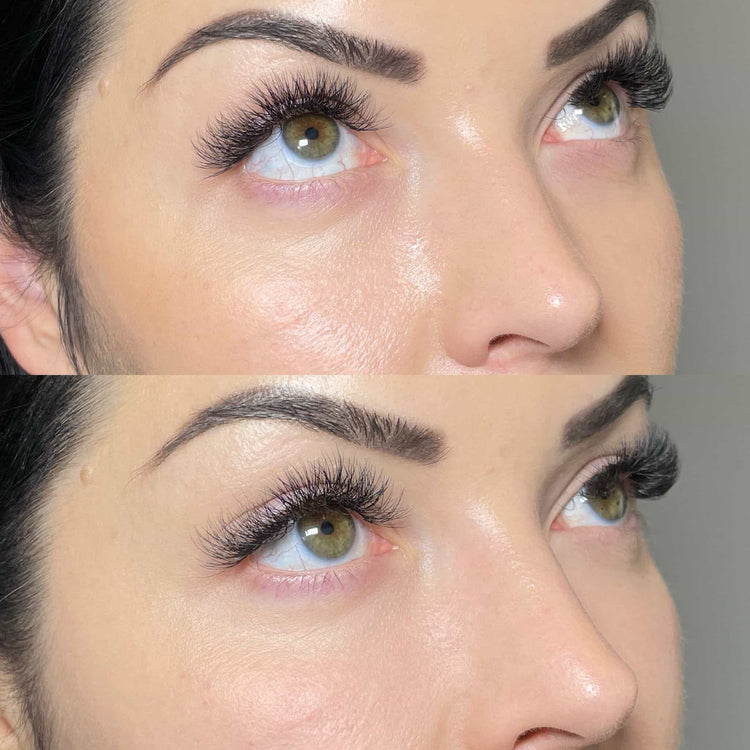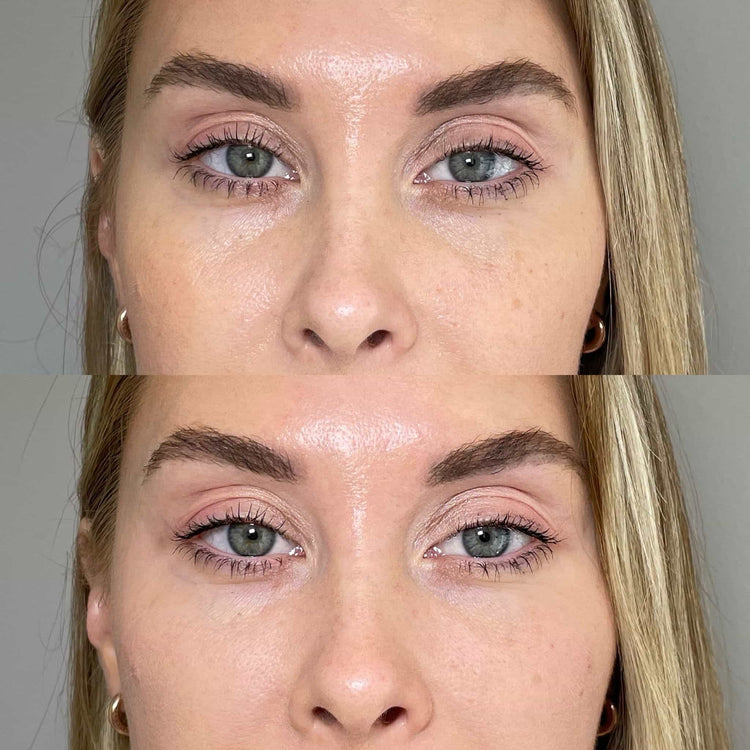Choosing the Right Practitioner
Finding the right practitioner for your tear trough filler treatment is paramount in ensuring both safety and achieving desired results.
Qualifications and Experience
Qualifications and experience are crucial factors to consider when selecting a practitioner for tear trough filler injections. Look for practitioners who are medical professionals, such as doctors, registered nurses, or dentists, with specialized training and certifications in aesthetic medicine.
Inquire about their experience specifically with tear trough fillers, as this procedure requires precision and an understanding of facial anatomy to avoid complications like filler migration or overcorrection.
Reviews and Testimonials
Online reviews and testimonials can offer valuable insights into a practitioner’s skills and patient satisfaction.
Read through reviews carefully, paying attention to both positive and negative feedback. Look for patterns in the comments, such as recurring mentions of specific skills or areas of expertise.
Be sure to check the source of the reviews and consider their authenticity. Websites and platforms specifically designed for healthcare reviews are often more reliable than generic social media pages.
Consultation Process
Before committing to a tear trough filler treatment, it’s essential to have a comprehensive consultation with your chosen practitioner. This consultation should provide you with an opportunity to discuss your desired outcome, medical history, and any concerns you may have.
The practitioner should thoroughly assess your facial anatomy, taking note of your existing features, skin texture, and any potential asymmetries.
This assessment is crucial for determining the appropriate amount and placement of filler to achieve natural-looking results and minimize the risk of complications.
During the consultation, don’t hesitate to ask questions about the procedure, potential risks and benefits, aftercare instructions, and realistic expectations. A reputable practitioner will be transparent and provide clear explanations to ensure you feel comfortable and informed before proceeding with the treatment.
Understanding Tear Trough Filler
Undergoing tear trough filler injections can effectively address under-eye hollows, promoting a more refreshed and youthful appearance.
Types of Fillers
Tear trough fillers are a popular cosmetic treatment used to address the dark circles and hollows that often appear beneath the eyes with age. They work by injecting hyaluronic acid gel into the tear trough area, plumping up the skin and smoothing out the wrinkles.
There are different types of hyaluronic acid fillers available, each with varying consistencies and properties. Some common types used for tear troughs include:
Hyaluronic Acid Fillers:
- Soft gel fillers:
- Medium-density fillers:
- Thicker gel fillers:
These are formulated to be less firm and provide a more subtle lifting effect. They’re often preferred for younger patients or those with minimal hollowness.
These offer a balance of lift and volume, making them suitable for moderate tear trough concerns.
Designed for more significant hollows or pronounced wrinkles, these provide a strong lifting effect but require more expertise in placement to avoid overfilling.
Choosing the right type of filler depends on individual needs and desired outcomes. Consultation with a qualified practitioner is essential to determine the most appropriate option.
Expected Results and Limitations
Tear trough fillers are a popular cosmetic treatment designed to address the dark circles and hollows that can appear beneath the eyes with age. They work by injecting hyaluronic acid gel into the tear trough area, plumping up the skin and smoothing out wrinkles.
Hyaluronic acid is a naturally occurring substance in the body that helps retain moisture, giving the skin a plump and youthful appearance. When injected into the tear trough, it can effectively minimize the appearance of dark circles and hollows, creating a more refreshed and youthful look.
It’s important to understand that tear trough fillers are not a permanent solution. The hyaluronic acid gradually breaks down over time, typically lasting anywhere from 6 to 18 months. Maintenance treatments will be needed to maintain the desired results.
Like any cosmetic procedure, tear trough filler injections come with potential risks and limitations. It is crucial to choose a qualified practitioner who has extensive experience in this specific area of aesthetics.
Complications can include swelling, bruising, asymmetry, and infection.
In some cases, the filler may migrate from its intended location, resulting in an unnatural appearance. This highlights the importance of thorough assessment, precise injection technique, and realistic expectations.
Pre-Treatment Preparation
Before embarking on a tear trough filler treatment, taking time for thorough pre-treatment preparation is essential to ensure both safety and optimal results.
Medical History Review
Pre-treatment preparation involves a comprehensive medical history review. This allows the practitioner to identify any potential contraindications or factors that might influence treatment outcomes.
Information regarding past medical conditions, medications (including supplements), allergies, and previous cosmetic procedures is crucial.
Be open and honest with your practitioner about your health history, even if it seems unrelated to the treatment. This helps them make informed decisions about your candidacy for tear trough fillers and personalize your treatment plan.
Pre-existing skin conditions, such as eczema or rosacea, may require special considerations or alternative treatment approaches.
Medications and Supplements
Before undergoing tear trough filler injections, certain medications and supplements should be reviewed with your practitioner. Some medications can increase the risk of bleeding or bruising, which could complicate the procedure or prolong healing time.
It’s important to disclose any blood thinners, such as aspirin or warfarin, as well as nonsteroidal anti-inflammatory drugs (NSAIDs) like ibuprofen or naproxen. Your practitioner may advise you to temporarily discontinue these medications before your appointment to minimize the risk of complications.
Some supplements, particularly those containing vitamin E or fish oil, can also affect blood clotting and should be discussed with your practitioner.
Skin Sensitivity and Allergies
Understanding skin sensitivity and allergies is crucial in the context of tear trough filler treatments. Allergic reactions to hyaluronic acid fillers are relatively rare but can occur.
It’s important to inform your practitioner about any known allergies, particularly to substances like lidocaine (often used as a local anesthetic during procedures) or other ingredients commonly found in cosmetic fillers.
A patch test may be recommended for individuals with a history of allergies to determine if they have any sensitivity to the specific filler being used.
Pre-treatment preparation should also include avoiding activities that can increase bruising or inflammation before your appointment, such as strenuous exercise or alcohol consumption in the days leading up to the treatment.
Additionally, discontinue using retinoids or other skin exfoliants a few days prior to the procedure, as they can make the skin more sensitive.
During the Treatment
Tear trough fillers are a popular cosmetic treatment designed to address the dark circles and hollows that can appear beneath the eyes with age. They work by injecting hyaluronic acid gel into the tear trough area, plumping up the skin and smoothing out wrinkles.
Hyaluronic acid is a naturally occurring substance in the body that helps retain moisture, giving the skin a plump and youthful appearance. When injected into the tear trough, it can effectively minimize the appearance of dark circles and hollows, creating a more refreshed and youthful look.
It’s important to understand that tear trough fillers are not a permanent solution. The hyaluronic acid gradually breaks down over time, typically lasting anywhere from 6 to 18 months. Maintenance treatments will be needed to maintain the desired results.
Numbing Agents
During the procedure, numbing agents such as lidocaine are commonly used to minimize discomfort.
These anesthetics temporarily block nerve signals, reducing pain and sensitivity in the treated area. The practitioner may apply a topical anesthetic cream beforehand, followed by injections of lidocaine for deeper anesthesia.
Injection Technique
During the tear trough filler injection procedure, a specialized cannula or needle is used to carefully deposit the hyaluronic acid gel beneath the skin.
The practitioner will strategically place the injections along the tear trough, aiming to create a natural-looking lift and smooth out any hollowness. The amount of filler injected will vary depending on individual needs and desired outcomes.
The technique employed during injection is crucial for achieving optimal results and minimizing complications.
Practitioners use precise hand movements and techniques to ensure the filler is deposited in the correct location and at the appropriate depth.
This involves understanding facial anatomy, identifying key landmarks, and considering individual variations in facial structure.

Monitoring for Complications
During the tear trough filler injection procedure, a specialized cannula or needle is used to carefully deposit the hyaluronic acid gel beneath the skin.
- The practitioner will strategically place the injections along the tear trough, aiming to create a natural-looking lift and smooth out any hollowness.
- The amount of filler injected will vary depending on individual needs and desired outcomes.
- The technique employed during injection is crucial for achieving optimal results and minimizing complications.
- Practitioners use precise hand movements and techniques to ensure the filler is deposited in the correct location and at the appropriate depth.
- This involves understanding facial anatomy, identifying key landmarks, and considering individual variations in facial structure.
Post-Treatment Care
Post-treatment care is crucial for maximizing the results of tear trough filler injections and minimizing the risk of complications. Following your practitioner’s instructions carefully is essential for optimal healing and long-lasting outcomes.
Ice Packs and Cold Compresses
Post-treatment care involves a series of steps designed to promote healing, minimize swelling and bruising, and ensure the filler settles properly.
Applying ice packs or cold compresses to the treated area for 10-15 minutes at a time, several times a day, can help reduce inflammation and swelling.
Avoid touching or rubbing the injected areas as this can disrupt the filler and increase the risk of bruising.
It’s also important to avoid strenuous activities, intense sun exposure, and excessive heat for a few days following the treatment.
Your practitioner may recommend specific skincare products or medications to help with healing and minimize any side effects.
Staying hydrated is crucial during the recovery process as it helps promote tissue regeneration and reduce swelling.
Avoiding Touching or Rubbing the Area
Avoiding touching or rubbing the injected area after tear trough filler treatment is essential. These actions can disrupt the placement of the filler, increase the risk of bruising, and potentially lead to uneven results.
Allowing the filler to settle naturally in its intended location is key to achieving a smooth and natural appearance.
Follow-Up Appointments
Follow-up appointments are an important part of ensuring successful tear trough filler treatment outcomes. These appointments provide an opportunity to monitor healing, assess the results, and address any concerns or adjustments that may be needed.
Typically, you’ll have a follow-up appointment scheduled within a few days after your initial treatment. This allows the practitioner to check for any immediate complications, such as excessive swelling or bruising, and provide guidance on post-treatment care.
Subsequent follow-up appointments may be recommended at intervals determined by the practitioner, depending on individual healing progress and desired outcomes. These appointments allow for ongoing assessment of the filler’s placement, volume, and longevity.
If you experience any unusual symptoms or notice changes in your treated area between appointments, don’t hesitate to contact your practitioner promptly for advice and guidance.
Open communication with your practitioner is crucial throughout the entire process, ensuring that you feel comfortable and confident about your treatment results.
Managing Potential Complications
Managing potential complications is paramount when considering tear trough filler injections.
Bruising and Swelling
Bruising and swelling are common side effects of tear trough filler injections. These reactions typically peak within a few days following the procedure and gradually subside over a week or two.
To minimize bruising, it is important to avoid activities that increase blood flow to the area, such as strenuous exercise or alcohol consumption, in the days leading up to and following treatment.
Applying ice packs or cold compresses can also help reduce swelling.

If you experience excessive bruising or swelling that persists beyond a couple of weeks, contact your practitioner to discuss possible causes and appropriate management strategies.
Lumps or Nodules
Managing potential complications is crucial for ensuring a successful tear trough filler treatment. It’s important to be aware of common side effects, such as bruising and swelling, which typically subside within a week or two after the procedure.
If you notice any unusual symptoms or changes in your treated area, promptly contact your practitioner. They can assess the situation and provide appropriate guidance or treatment.
One potential complication is filler migration, where the injected hyaluronic acid moves from its intended location. This can cause an unnatural appearance. Choosing a qualified practitioner with extensive experience in tear trough fillers is essential to minimize this risk.
Another concern is the risk of infection. While rare, it’s important to maintain good hygiene practices and follow your practitioner’s post-treatment instructions carefully to minimize this risk.
It is crucial to have realistic expectations regarding treatment outcomes. Tear trough fillers can effectively reduce the appearance of hollows and dark circles but are not a permanent solution. Maintenance treatments will be needed over time to maintain the desired results.
Asymmetry
Managing potential complications associated with tear trough filler injections requires vigilance and proactive measures before, during, and after the procedure.
Choosing a qualified practitioner experienced in this specific area is paramount.
During the consultation, discuss your medical history, allergies, medications, and any concerns you have. Be open about your desired outcome and expectations to ensure both you and the practitioner are on the same page.

Before treatment, review instructions for pre-treatment preparations such as avoiding certain medications and skincare products that can increase bruising or interfere with healing.
During the procedure, pay attention to the practitioner’s technique and communication. Ensure they use sterile techniques and explain each step clearly.
Post-treatment, diligently follow all instructions provided by your practitioner regarding ice application, activity restrictions, skincare routines, and when to schedule follow-up appointments.
Promptly report any unusual symptoms or concerns to your practitioner, as early intervention can often resolve potential complications effectively.
Infection
Infection is a potential complication of any medical procedure, including tear trough filler injections. To minimize the risk of infection:
* **Choose a qualified and experienced practitioner:** Ensure they have proper training, certifications, and maintain strict sterilization protocols in their clinic.
* **Maintain good hygiene:** Wash your hands thoroughly before and after the procedure and avoid touching the treated area.
* **Follow post-treatment instructions carefully:** Adhere to recommendations for cleaning the injection site, using prescribed medications if given, and avoiding activities that could increase risk of infection.
* **Watch for signs of infection:** Be alert for redness, swelling, warmth, pain, or pus at the injection site. If you notice any of these signs, contact your practitioner immediately.
Remember, prompt attention to potential complications is crucial for successful treatment outcomes and overall well-being.
Book your consultation for Tear Trough Fillers at It’s Me & You Clinic with Dr. Laura Geige
- How To Prevent Tear Trough Filler Complications In Kingston Upon Thames - October 1, 2025
- How Long After Lip Filler Can I Use Lipstick - September 30, 2025
- How To Maximize The Effectiveness Of Your CBD Vape Pen - September 29, 2025
